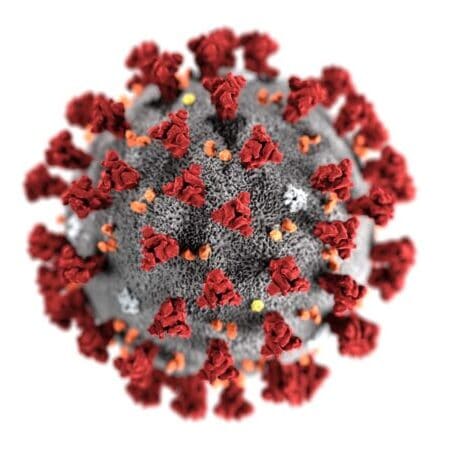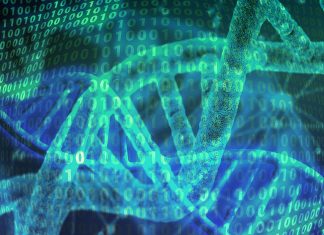This Content Is Only For Subscribers
SARS-CoV-2 Antibody Testing finds antibodies in a sample and confirms if the person was previously infected with the virus or not. Despite some limitations, recent research shows testing IgM and IgG may serve as an additional tool for disease detection.
The emergence of a new severe acute respiratory syndrome disease, later named COVID-19 by the World Health Organization (WHO), was first reported in Wuhan, China, on December 12.
By March 31, 2020, over seven hundred thousand confirmed cases were identified in more than a hundred countries and regions. As of today, June 15, 2020, there have been more than eight million confirmed cases and 439,051 deaths worldwide.
The clinical manifestations of COVID-19 disease include fever, dry cough, and fatigue, along with respiratory distress syndrome and pneumonia. Currently, the standard method for identifying COVID-19 patients is based on the viral nucleic acid test by RT-PCR method in samples collected from nasopharyngeal and throat swabs.

The technique, however, produces high false-negative results since the accuracy of the results depends on many pre-analytical variables, including sample types and collection, sample transportation and storage conditions, as well as the quality and consistency of the PCR assays being used (Lippi, Simundic, & Plebani, 2020).
Requiring highly skilled technicians, a clean environment, and specialized equipment are among other issues that limit the use of RT-PCR methods for disease diagnosis in many countries.
Hench, clinicians, yet additionally researchers, overseers, and policymakers of all national human services frameworks, are concentrating on the continuous debate on demonstrative tests for COVID-19 disease even though an elective technique dependent on IgM and IgG testing in blood tests has been developed and validated for clinical use.
Recent Research on IgM and IgG Testing
Like other pathogens, the SARS-CoV-2 virus also elicits the development of specific antibodies, IgM and IgG. Testing IgM and IgG in blood samples has become an alternative method for diagnosing COVID-19 cases.
In a retrospective and observational study, Jiajia Xie and colleagues analyzed the clinical features and immunological characteristics of 56 COVID‐19 patients, of which over 50% developed severe illness and required intensive care. Despite negative RT-PCR test results, all patients demonstrated a high level of specific IgG, demonstrating SARS‐CoV‐2 infection (Xie et al., 2020).
By evaluating the analytical performance parameters of the Diazyme SARS-CoV-2 IgM and IgG serology assays, the UC San Diego Health scientists have concluded that Diazyme IgM/IgG assays are suited for detecting SARS-CoV-2 IgG and IgM in patients with suspected SARS-CoV-2 infections (Suhandynata et al., 2020).
In the study, they found that sensitivity and specificity for detecting seropositivity at ≥ 15 days following a positive SARS-CoV-2 PCR result was 100.0% and 98.7% when assaying for the panel of IgM and IgG.
Using an in-house developed ELISA kit, Zhang et al. found an antibody against the virus in almost all patients after five days of symptom onset (Zhang et al., 2020).
Similarly, using a commercial ELISA kit from Livzon Diagnostics (China), Tan et al. found a marked increase of immunoglobulins seven days after the onset of symptoms, particularly in patients with severe disease (Tan et al., 2020).
RT-PCR vs IgM and IgG Testing
In the RT-PCR method, a particular segment of RNA is converted to DNA, termed cDNA, which is then amplified and monitored in real time. The test is dedicated to identifying the viral RNA in a particular sample.
Also, challenges in collecting samples during various stages of the disease may result in false-negative results. On the other hand, in ELISA or serological test IgM and IgG targeting the surface spike protein (S-protein), the receptor binding five domains of the spike protein (RDB) of the virus are assayed based on antigen-antibody immune reactions.
In the serological test, a blood sample is used, and the test results reflect the prevalence of IgG in the entire body system. Compared with the RT-PCR test methods, IgM‐IgG test results are not beyond limitations.
A false-positive result may appear if cross‐reactivity with other coronaviruses occurs. Timing of sample collection and interpretation of test results play crucial roles in determining the efficacy of the method.
Combining serology test results with PCR results can enhance COVID-19 detection sensitivity and accuracy, which is suggested in multiple studies. In a report, Jiajia Xie and colleagues described a combination of nucleic acid and IgM‐IgG testing as a more sensitive and accurate approach to the diagnosis and early treatment of COVID‐19 (Xie et al., 2020).
A study by Guo and colleagues demonstrated that the positive detection rate of a single PCR test went from 51.9% to 98.6% when combined with an IgM ELISA assay (Guo et al., 2020).
Apart from identifying the later onset of viral infection, serological tests play crucial roles in epidemiological studies, the development of a vaccine, monitoring the progression of antibody therapy, and risk assessments.
In summary, combining nucleic acid testing and the IgM‐IgG antibody test is the optimal method for diagnosing SARS‐CoV‐2 infection. The measurement of specific COVID-19 antibodies (both IgG and IgM) should serve as an additional, non-invasive tool for disease detection and management.




















